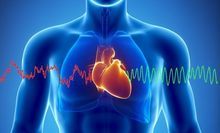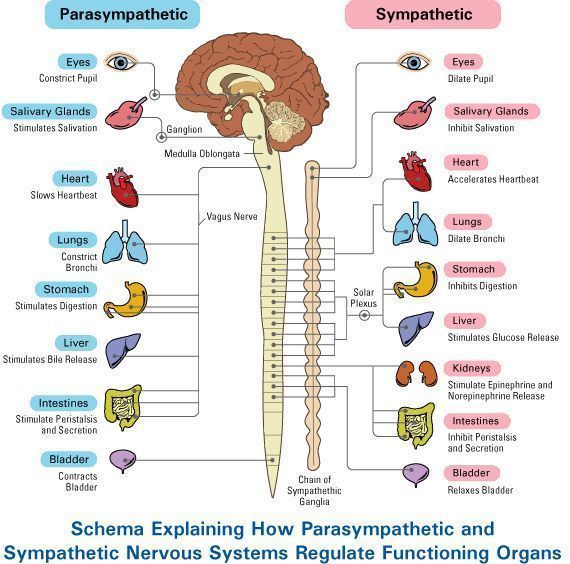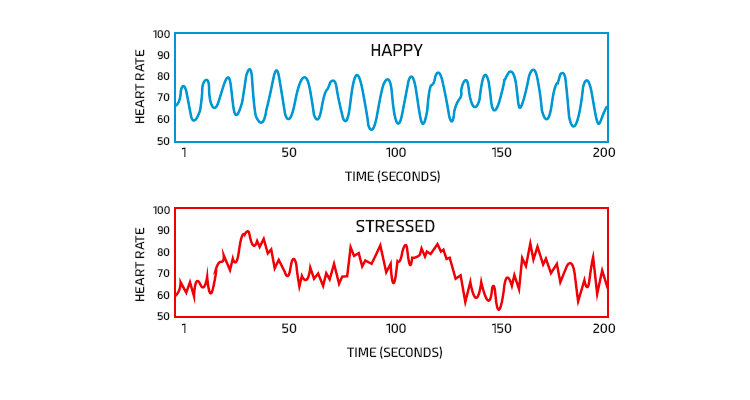
Advancements in technology now allow us to accurately detect signs of stress and the impact it has on the body. Resting heart rate variability is one area that psychologists now examine using biofeedback machines. This mind-body connection can then be utilised in order to help people learn how to control their body’s response to stress and therefore reduce the symptoms of stress and the impact it has on the body.
People have been referring to the mind-body connection for centuries. Even in our present age, it not uncommon to hear people using statements like, ‘my broken heart’, ‘my heart skipped a beat’, and ‘my heart just sunk’, when making references to the interconnection between the heart and emotions.
Now science is finally catching up and is supporting the age-old intuition about the mind-body connection. Accumulating evidence now demonstrates the strong relationship between the heart, mind and emotions, and more specifically a measure known as resting heart rate variability (HRV).
When a person is exposed to a stressor, a part of our central nervous system known as the autonomic nervous system (ANS) is triggered. The ANS is comprised of two branches known as the parasympathetic and the sympathetic nervous system. The parasympathetic nervous system (PNS) is responsible for the stimulation of activities that occur when the body is at rest, including salivation, lacrimation (tears), urination, digestion and defecation. The PNS is often described as the ‘rest and digest’ branch.

The sympathetic nervous system (SNS) is the division of the ANS that is responsible for stimulating activities associated with the ‘fight-or-flight’. These are the same signs of stress that occurs whenever the body is faced with some kind of threat, whether they are real or perceived). The responses include:
During times of stress, the parasympathetic nervous system is suppressed (rest and digest) while the sympathetic nervous system is activated (fight or flight). This is when the signs of stress become obvious.

Over the last few decades, researchers have become increasingly interested in changes in heart rhythms during times of stress and have identified a useful stress and overall measure of health known as ‘heart rate variability.’
Resting heart rate variability (HRV) is a measure of the intervals between each heartbeat, and provides a psychophysiological indicator of arousal, emotional state and is one of the signs of stress. It reflects the degree to which cardiac activity can adapt to meet changing situational demands.
Because the SNS and PNS influence the length of time between consecutive heartbeats, HRV can provide a valid measure of the balance between these two branches. Faster heart rates, which can be due to increased SNS and/or lower PNS activity, correspond to a shorter interbeat interval (lower HRV = stressed state) while slower heart rates have a longer interbeat interval, which can be attributed to increased PNS and/or decreased SNS activity (higher HRV = relaxed state).
Studies actually show that healthy people have a higher degree of HRV, reflecting the ability to adapt quickly to physical or psychological demands of the environment. Lower variability in the heart rate predicts a greater risk of a cardiac event such as a heart attack or myocardial infarction and is regarded as a marker for increased risk of death! HRV can also provide an indicator of ageing as it is reduced as we age or when we suffer from illness.
The resting heart rate variability provides a clear example of the mind-body connection and from a mental health standpoint, the following findings have been found about HRV:
Because of its association with a range of physical and mental health problems, researchers have investigated two questions (1) Is it possible to consciously manipulate HRV and, (2) if so, do changes in HRV lead to improved mental health?
In relation to the first question, studies have convincingly demonstrated that HRV can be consciously modified. Engaging in regular exercise and improving overall physical fitness can increase HRV. The often overlooked technique of breathing retraining has also been shown to be a powerful way to modify HRV. Through the use of specialised biofeedback machines where people are trained to adjust their breathing to a rate slower than normal breathing, HRV can be increased (this means reduced signs of stress).
Biofeedback machines such as the ProComp Infiniti®, Emwave® and StressEraser® can provide visual feedback of heart rhythms and breathing rate which then helps people to effectively learn ways to manipulate their resting heart rate variability.
Studies into the effectiveness of HRV training for the treatment of mental health problems such as depression and anxiety are still preliminary, although very promising. One study by Karavidas and colleagues (2007) showed that HRV training to people with major depression resulted in significant improvements in mood after only 4 sessions. School children with anxiety disorders, obsessive-compulsive disorder, ADHD and conduct disorder also experienced clinical improvements after HRV training (Pop-Jordanova, 2009).
While further studies are required, HRV training is certainly a promising treatment option for people with a range of mental health problems. It has little prospect of side effects and from another positive standpoint leads to improvements in overall physical health. Biofeedback clinicians across the world are using it in their clinical settings and the response so far is extremely positive.